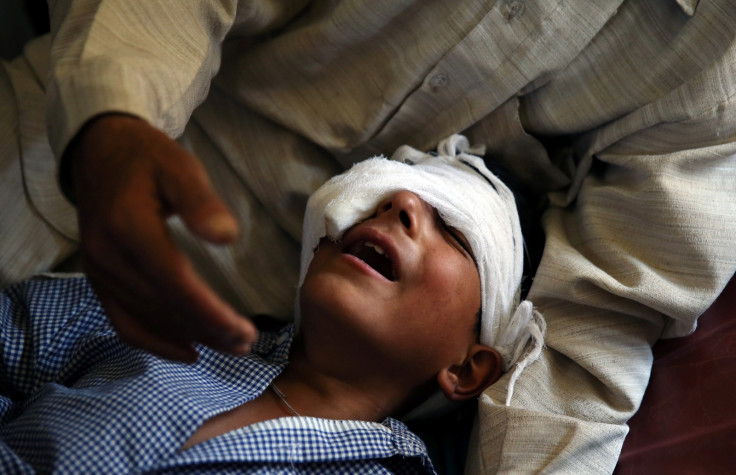India's security force admits firing 1.3 million pellets within 32 days of Kashmir unrest
The paramilitary CRPF defends firing pellets calling it a non-lethal method of riot control.

India's paramilitary security force has admitted firing as many as 1.3 million pellets in the month-long unrest rocking Kashmir. Despite widespread criticism against the use of pellets in the valley that have maimed dozens of protesters including several children, the Central Reserve Public Force (CRPF) defended the practice classifying it as "non-lethal".
The CRPF said its personnel fired up to 3,000 cartridges in 32 days to quell the protests. It revealed the figure in response to public interest litigation (PIL) by the Bar Association at the Jammu and Kashmir high court.
"In case, this (pellet gun) is withdrawn from the options available with the CRPF, CRPF personnel would have no recourse in extreme situations but to open fire with rifles, which may cause more fatalities," said the CRPF in its affidavit filed in the court.
Indian security forces have come under intense scrutiny over the alleged use of excessive force to contain the protests in Kashmir. Demonstrations broke out in the Indian-administered Kashmir valley in July following the killing of popular separatist figure Burhan Wani. Since then, there have been constant skirmishes in the area with the authorities struggling to control the situation despite state-wide curfew.
Cartridges are often loaded with lead which disperses into thousands of pellets once fired. The pellets do not travel in a definite direction and are used to disperse crowds. Their use in Kashmir has drawn strong criticism from several corners including rights groups and opposition political parties as it has almost blinded more than 100 people.
Though riot control guidelines specifically mention all arms should be fired targeting below the waist, the CRPF argued: "But the situation prevailing on the streets during an ongoing law and order incident is dynamic and mobile. In such a situation, sometimes it is difficult to go in for precise aimed fire at a moving, bending and running target." The paramilitary force said 14 other types of "less lethal and non-lethal" munitions such as pepper balls, stun grenades, oleoresin grenades and electron shells were used during the ongoing crisis in Kashmir.
"If anyone gets injured in action we do feel bad about it; it's not with intent that we do this. When we have to control the situation, we do take action with available resources we have," CRPF's Director General K Durga Prasad told NDTV.
© Copyright IBTimes 2025. All rights reserved.






















